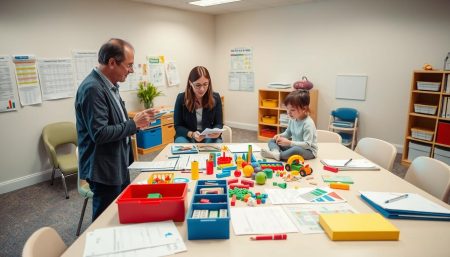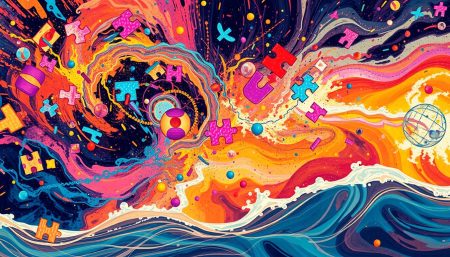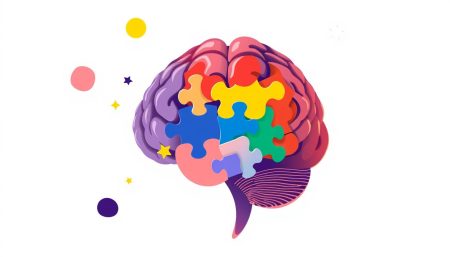What's Hot
- Understanding Metastatic Cancer and Treatment Options
- Understanding Lymphoma Cancer: Symptoms & Treatment
- Don Omar Cancer: Updates on Reggaeton Star’s Health
- Inflammatory Breast Cancer: Causes and Warning Signs
- Early Signs and Kidney Cancer Symptoms to Watch For
- Understanding Sarcoma Cancer: Types and Treatment Options
- Early Signs and Thyroid Cancer Symptoms to Watch For
- Early Signs and Symptoms of Colon Cancer to Know
Autism Spectrum Disorder
Autism Diagnosis: Who Identifies ASD in Patients
Understanding Autism Spectrum Disorder (ASD) starts with a precise diagnosis. This first step is carefully planned by a team of healthcare experts. They work together to identify ASD, which is a complex task. It’s not just about checking boxes. It’s…
The world of autism spectrum disorder (ASD) comes with a special challenge: sensory processing disorder (SPD). SPD affects how our nervous system handles sensory information. It turns these messages into actions and behaviors. For those with SPD, this process can…
Understanding DSM-V Autism Spectrum Disorder
Understanding Autism Spectrum Disorder (ASD) means diving into the DSM-V. DSM-V Autism Spectrum Disorder diagnosis is key for support and treatment. The DSM-V from the American Psychiatric Association has new criteria to better understand ASD. The new criteria reflect our…
Understanding Autism Spectrum Disorder in Women
The recognition of autism spectrum disorder in women has grown in recent years. It has challenged old myths and shown how autism looks different in women. For a long time, autism was seen as a male issue, leaving women’s experiences…
Autism Symptoms in Adults Guide
Understanding autism spectrum disorder symptoms in adults is key. These signs are often missed, but they need our attention. This guide is for those who think they might have autism, their families, and healthcare workers. The term ‘autism spectrum disorder’…
Autism Spectrum Disorders Types 2024 Update
The world of neurodevelopmental health is always changing. Our understanding of types of autism spectrum disorder in 2024 is at a key point. This update is important for caregivers, doctors, and teachers. It affects more than just medical books. It…
Understanding Autism Spectrum Disorder Symptoms
Exploring the symptoms of autism spectrum disorder (ASD) is key to early autism intervention. ASD is a complex disorder that affects how people interact and behave. It’s important to understand these symptoms to offer the right support and find helpful…
Understanding Autism Spectrum Disorder ASD
Autism Spectrum Disorder (ASD) is more than just a term; it’s a reality for millions every day. The Centers for Disease Control and Prevention (CDC) say 1 in 54 kids in the U.S. have autism. This shows how common it…
Autism Spectrum Disorder ICD 10 Code Guide
The autism spectrum disorder ICD 10 code is key for doctors. It’s part of the International Classification of Diseases, Tenth Revision (ICD-10). This system helps doctors accurately record medical conditions. The ICD 10 code for autism spectrum disorder is vital.…
DSM 5 Autism Criteria Explained – Key Points
The field of mental disorder classification is always changing. The Diagnostic and Statistical Manual of Mental Disorders (DSM) gets more detailed with each new edition. The fifth edition (DSM-5) by the American Psychiatric Association brought big changes to the DSM…
Autism Spectrum Disorder Statistics in the US
Research advancements highlight the need for accurate autism spectrum disorder statistics. Understanding the prevalence of autism spectrum disorder in the US is key for many. This includes healthcare workers, policymakers, educators, and families. These statistics are vital. They help shape…
Understanding DSM Autism Spectrum Disorder
The DSM-5 autism spectrum disorder diagnosis is a key part of mental health. It covers a wide range of traits, from social challenges to repetitive behaviors. By using the dsm 5 asd diagnosis criteria, doctors can spot the details of…
Understanding Autism Spectrum Disorder – Key Insights
Every morning, many people and families face the challenges of Autism Spectrum Disorder (ASD). Learning about it is not just sharing facts. It’s a crucial step towards helping those affected and making our communities better.
ASD is a complex condition that affects everyone, regardless of race, gender, or background. By understanding ASD, we can create more inclusive places. We can also improve education and make sure help is available to those who need it. Let’s explore Autism Spectrum Disorder together and work towards a brighter future for everyone.
What Is Autism Spectrum Disorder?
Autism Spectrum Disorder (ASD) is a complex condition. It affects how people interact, communicate, and behave. Knowing what Autism Spectrum Disorder is helps us understand its many forms.
Defining Autism Spectrum Disorder (ASD)
The Autism diagnosis looks at how people act and develop. It follows rules from the DSM-5. These rules focus on social skills and repetitive behaviors.
The Range of Autism Spectrum Disorders
The ASD range shows how different people with ASD can be. Some are very skilled, like those with Asperger syndrome. Others need a lot of help in their daily lives.
Myths and Misunderstandings About ASD
Many myths about Autism still exist. People often think ASD comes from bad parenting or vaccines. But science says this isn’t true. It’s important to clear up these myths to help people understand ASD better.
Recognizing the Signs and Symptoms of Autism
Finding Autism symptoms can be hard because they show up in many ways. It’s key to spot early indicators of autism in children to help them early. This helps a lot in their development. We’ll look at signs of Autism Spectrum Disorder (ASD) in different ages. We’ll also talk about why it’s important to notice social and behavioral signs.
Early Indicators of Autism in Children
Spotting autism in kids starts with watching for early signs. Look for things like not making eye contact, not smiling at people, and not babbling on time. Kids might also ignore their caregivers or get really focused on certain things. Catching these signs early means you can get help from doctors sooner.
How Autism Symptoms Manifest in Different Age Groups
As kids get older, autism symptoms change too. Toddlers might have trouble talking and playing with others. They might not use facial expressions or gestures well. Older kids might have trouble thinking on their feet and sticking to routines. Teenagers face challenges with social skills and controlling their feelings, especially in school.
Understanding Behavioral and Social Symptoms
The behavioral symptoms of ASD include doing the same things over and over, not liking changes, and reacting strangely to sounds or touch. Social symptoms are about having trouble making friends, understanding social hints, and keeping up in conversations. Spotting these signs early helps parents and teachers give the right support. For more info, check out this resource on ASD signs and symptoms.
Support and Resources for Autism Spectrum Disorder
Getting a diagnosis of Autism Spectrum Disorder (ASD) means starting a journey towards growth and well-being. There are many effective treatments like behavioral, speech, and occupational therapy. Behavioral therapy, for example, uses Applied Behavior Analysis (ABA) to improve social and communication skills.
It’s important to work with experts to create a treatment plan that meets the person’s needs. This way, the therapy can be tailored to help them the most.
Support for families with ASD is also crucial. Groups like the National Autism Center and the Autism Society provide valuable resources. They offer educational materials and support groups to help families understand ASD better.
These organizations help build a supportive community. The American Academy of Child & Adolescent Psychiatry also recommends various interventions. These can help both individuals and their families live fulfilling lives.
Finding the right support takes time and effort. It’s important to be patient and persistent. There are many resources available to help on this journey.
By using these resources, families and individuals can face the challenges of ASD with more confidence and understanding.
FAQ
Q: What is Autism Spectrum Disorder?
A: Autism Spectrum Disorder (ASD) is a condition that affects how people interact, communicate, and behave. It’s called a spectrum because each person with ASD is unique. They have their own set of skills and challenges.
Q: How is Autism Spectrum Disorder diagnosed?
A: Doctors diagnose ASD by looking at a person’s behavior and past development. They use the Diagnostic and Statistical Manual of Mental Disorders (DSM-5) and do assessments. This is done by healthcare professionals like developmental pediatricians and child psychologists.
Q: Why is Autism awareness important?
A: Raising awareness about Autism is key to understanding and accepting people with ASD. It helps reduce stigma and supports early intervention. This can greatly improve their lives.
Q: What are the early indicators of Autism in children?
A: Early signs include not making eye contact, speaking late, and not wanting to play with others. They might also repeat actions a lot and not like changes in routine. Every child is different, so these signs can vary.
Q: How do Autism symptoms manifest differently as individuals age?
A: ASD symptoms change as people get older. Young kids might struggle with talking or have certain behaviors. Older kids and adults might find social interactions harder and not understand social cues as well.
Q: Can you debunk a common myth about Autism?
A: One myth is that people with Autism can’t form emotional bonds. This is not true. Many with ASD can form deep connections. They might just show their feelings in different ways.
Q: What treatment options are available for Autism Spectrum Disorder?
A: Treatments for ASD include behavioral therapy, speech therapy, and occupational therapy. Sometimes, medications are used to help with specific symptoms. The best plan is tailored to each person and often combines different therapies.
Q: How can families find support after an Autism diagnosis?
A: Families can find support through Autism organizations, support groups, and healthcare providers. These resources can help find the right therapies and provide guidance.
Q: What role do support groups play for families affected by Autism?
A: Support groups offer a community for families to share and get advice. They provide emotional support and information. This can make families feel less alone.
Q: Can therapy improve the quality of life for someone with Autism?
A: Yes, therapy can help improve communication, social skills, and manage behavior. This can greatly improve the life of someone with ASD.























